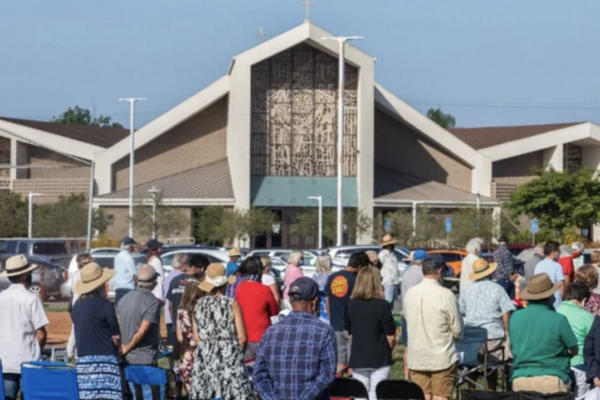This article was originally published in The Hill.
A Los Angeles-area church is the latest to make national headlines by defying public health orders and gathering in-person as COVID-19 cases continue to rise. Grace Community Church members appeared to ignore guidelines that make religious gathering safer, such as wearing masks, distancing themselves from others and not singing. After dueling lawsuits, a judge ruled the church could meet indoors — if attendees wear masks and sit six feet apart.
California has become a battleground between churches and the government during the coronavirus pandemic, with implications for faith groups across the country. At the end of May, the U.S. Supreme Court upheld the state’s restrictions on religious services, even while President Trump voiced his support for faith groups that declared themselves essential.
Some of these churches — most of the protesting congregations are Christian — defy their own religious values of protecting life by meeting in-person in the midst of a deadly pandemic.
And yet, the local, state and federal governments bear responsibility for their part in this divide. As in past crises, this pandemic shows that the government’s lack of ongoing engagement with religious communities can turn what should be an asset into a liability.
“We understand that the world does not understand the importance of the church,” Grace Community Church pastor John MacArthur said in his sermon when they reopened.
Even faith leaders who support the shutdown thought that classifying religious organizations as “nonessential” was another example of government misunderstanding and even hostility to religion. It would be easy to dismiss their concerns as hurt feelings, but that negates their role as “first responders.”
In the first weeks of the shutdown, while government agencies organized one-directional calls asking faith leaders to spread messages related to COVID-19, these leaders were figuring out how to deliver food to elderly members of their communities and children out of school.
We heard from countless people of faith wanting to be of service. One group, for instance, wanted to be able to shelter immigrants being released from detention in their unused buildings. Bureaucratic, legal and operational challenges prevented them from fully carrying through with the idea.
Many people shape their whole lives around what they believe. They are more likely to turn to their religious organization for guidance and resources during times of crisis than their local council member’s office. The classification showed a disconnect between how the government and its constituents define what is “essential.”
We have been consulted by several government officials, who have acknowledged that the “essential” framing was not ideal. It caused confusion, left out the issue of risk and emphasized the running of government and the economy over people’s other concerns, particularly about their mental and spiritual wellbeing.
In California, state and local officials only released their guidelines for reopening congregations over Memorial Day weekend, after being pressured by a coalition of 1,200 churches threatening to reopen regardless of public health orders on May 26.
The guidelines here and around the country tend to be long and complex. It is difficult to know what is a suggestion and what is a mandate. We have heard great confusion among congregations about what they should be doing now.
Two recent national surveys report 52 to 70 percent of churches around the country have begun to meet in-person again, the vast majority of them taking health and safety precautions. Those measures vary greatly, however, with one survey finding that only 35 percent of churches meeting in-person require masks.
Many of the preparations require a significant capital outlay in order to reopen, at a time when giving to congregations is down. They may have to buy personal protective equipment, hand sanitizer, plexiglass barriers and cleaning agents. They may have to host more services for fewer people and pay staff and janitors for longer hours. And they potentially open themselves up to liabilities should a congregant or worker get sick.
As the guidelines say, the safest bet is to continue online services. Alternatively, many faith groups are meeting outdoors, in cars or in smaller groups.
Most people of faith understand the complexity of responding to a global pandemic, with 74 percent of Christians saying houses of worship should be subject to social distancing rules. Rogue actors will continue to make government agencies’ job of keeping people healthy more difficult.
What is needed now is leadership from the public sector to communicate clearly under what conditions houses of worship can open safely. Guidance will need to be coordinated across counties — where people live, work and worship are not always the same places. Government agencies also can provide access to resources to communities in need.
This work benefits from public officials having well established relationships with faith communities and respect for the essential roles they play in people’s lives.
Read the article on thehill.com.
Brie Loskota is the former executive director (2016-2021) of the USC Center for Religion and Civil Culture.
Rev. Najuma Smith is Assistant Director of Community and Public Engagement with the USC Center for Religion and Civic Culture.




